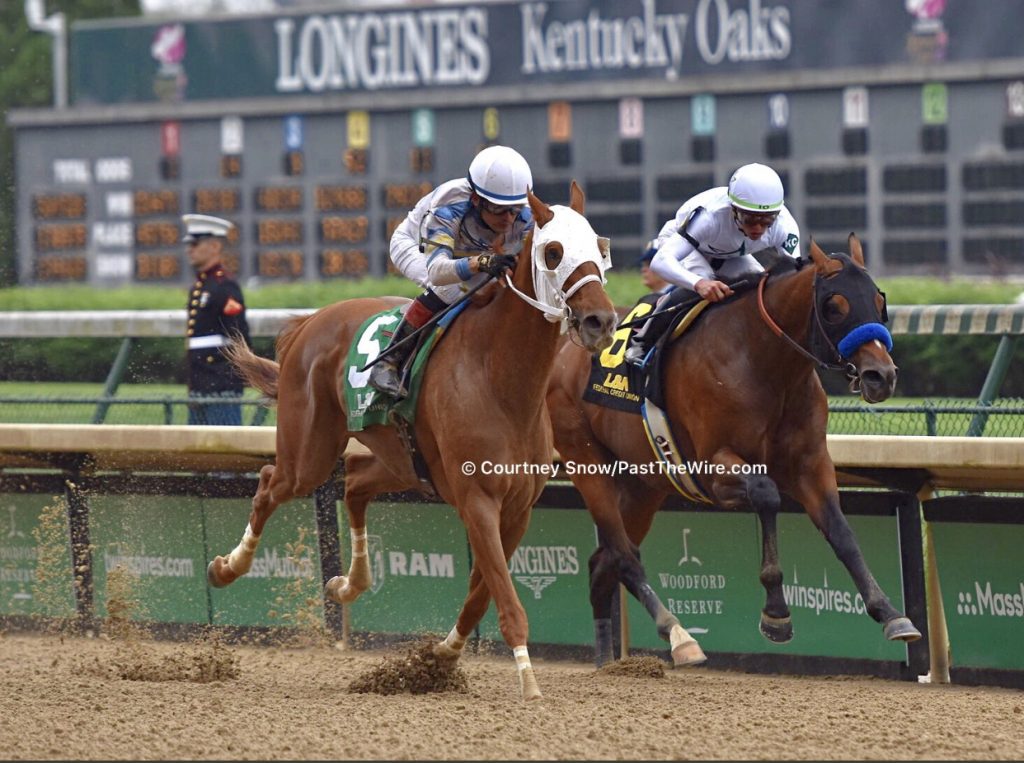
I was asked about Joint Injections aka…Tapping. Could I explain why and how it is done. I’ll try my best in terms we can all understand. Horses, like people get sore and have inflammation in their joints. Depending on how much inflammation or soreness you find will tell you if medication/supplements will get the soreness and inflammation out or do you have to call your Vet and inject the joint. As a trainer you want to do everything possible like icing, whirl-pooling, putting on poltis… anything that will help pull the inflammation out along with meds/supplements. If you are not getting the response you are looking for… you have no choice but to inject.
What you are doing is taking the excess fluid out of the joint and adding back fluid you took out. This is where it gets trickey… what are you going to put into the joint?
There are several things you can use. Obviously you want the Tap to last as long as possible. With that in mind… you and the vet come up with what you are going to use. You want to cool the joint out without causing anymore damage that is already done.
The most popular drug is Cortisone, why because it’s the cheapest and effective. But not necessarily the best thing to use. Remember the joint is full of inflammation and the Cortisone is going irritate it also. Usually it takes 4 or 5 days for the joint to calm down.
With that being said you can put something in the joint to help heal the joint. Put straight Hyaluronic Acid in the joint . It will take a few days more to get the inflammation out with Acid but it’s well worth it. Here is the rub it’s really expensive it can cost up to $500 a joint depending on the size of the joint. For instance a stifle joint is the largest joint on a horses body where as other joints are much smaller. If you use Cortisone it’s a lot cheaper… or a combination of Acid and Cortisone. I personally like the combination injections… not as expensive and works really well. You have to take into consideration how much the horse is worth and how many times they have been injected. Can the owner afford to Tap with the high price Meds and as cruel as it may sound is the horse worth the high price Meds.
Generally when your tapping joints you want to check the color of the fluid and the consistency. If the joint fluid is loose and runny and the color is reddish … It’s probably not the first time they have been tapped. Or is it a young horse you really want to take that into consideration once you start to Tap there is usually no turning back.
As a trainer you really don’t want to tap but you don’t have any choice. Every time you Tap a horse you stand the chance of a joint infection. I don’t care how careful the vet is you are putting a needle in the horses joint. The littlest speck of anything gets in there it’s infected. I’ve had joint infections…they’re terrible and you have a better chance than not the horse will never be the same.
Your decision may depend on how old a horse is and is he a claiming horse… is the horse just passing thru your barn. Let’s face it you haven’t much choice… he probably came to you tappped serval times as claiming horses. Generally higher price and stakes horses aren’t raced as much. So you can give them longer between races to sound up.
There is no set amount of time a Tap will last it depends on the horse and the serverity of the injury. Horses are like playing musical chairs when the music stops you want some place to sit. So the nature of the business is to tap them and move them on. There will come a time you just can’t tap the joint. At this point he needs time… meaning as long as it takes for them to get racing sound again. Usually it takes months or maybe longer. As a trainer you have to do the right thing for the horse. Even if means it’s time for a new vocation… I’ve given my share of horses away.
I think this is where the problem comes in with horses breaking down. I don’t think… I know… it’s a big part of the problem. With the new rules coming out soon it’s going to cut how many times you can Tap and when you can. Vet records are going to be going with the horse. When they are sold or claimed you will have a record of what is going on with the horse. Not saying that’s the cure… all I’m saying is… it’s a good start.
Don’t think for one instant that human athletes don’t get tapped all the time. Just watch an NFL game. They cart them off in a wagon back to the locker room. Depending on the injury they inject them and they’re playing the second half. They use way stronger meds than we do on horses. A human athlete can say they dont want the injection the horse can’t. In a perfect world when a horse comes up with a problem you give him time off. Time is money and most people can’t afford to give them the time. If you give a horse the time you can save them. I’m not an advocate of tapping but I’ll do it. You ask yourself…is the squeeze worth the juice… no pun intended. I hope that explains how and why we have Joint Injections.
See you at Races.




